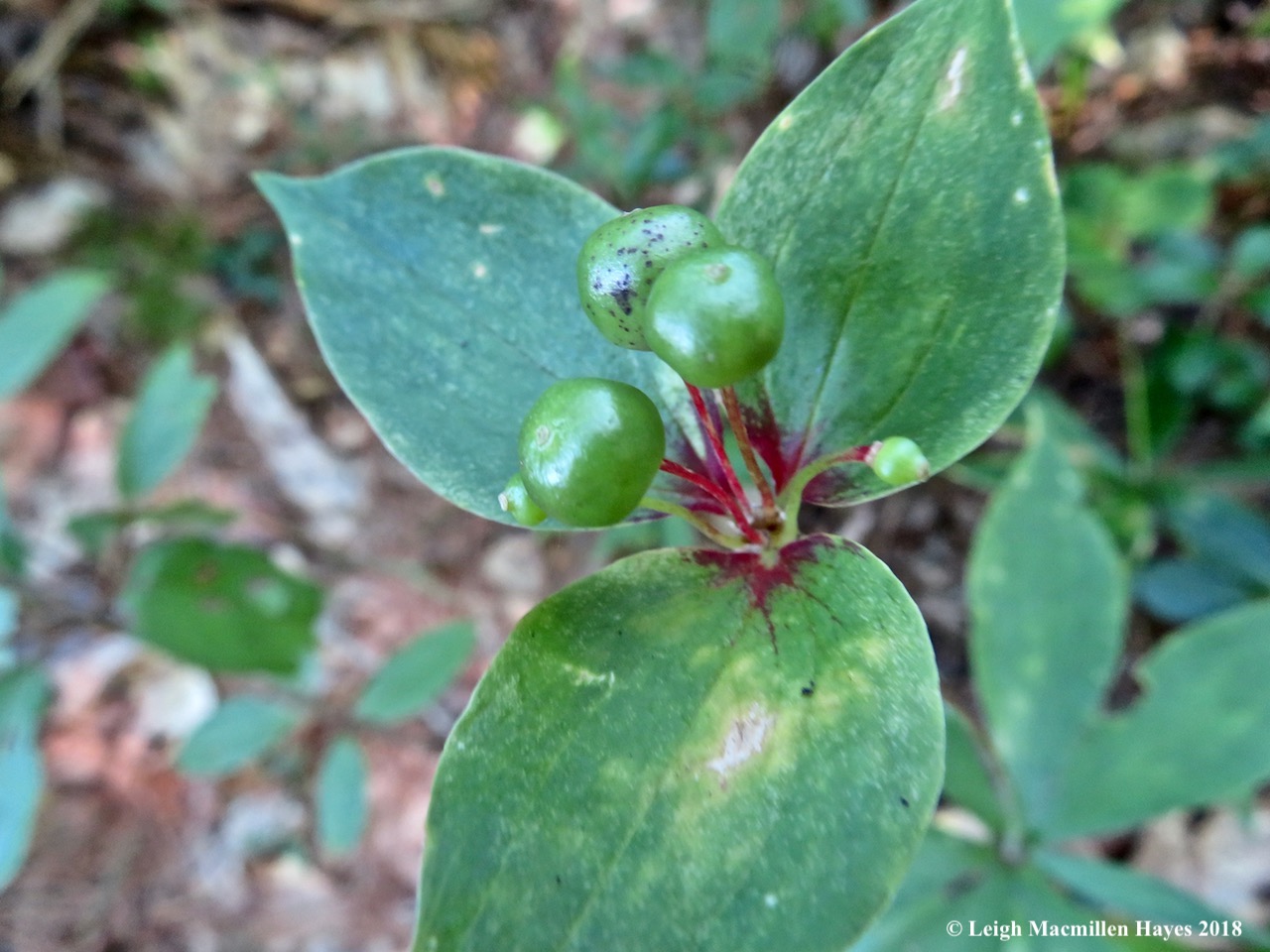My mission was two-fold. Hike up a small mountain and capture a one minute video to post on a work website next week, and retrieve a game camera so we can download the photos and then place in a different location.
And so it was that on this brisk morning, snow-capped Mount Washington greeted me. If you zoom in, you might see the buildings at the summit.
Because I was at a different summit that I frequent, I knew I had to check on the activity of the local residents and wasn’t disappointed. First, I followed their trails, where leaves are well packed. Those led to trees, but no downed nip twigs as one might expect. That could only mean one thing–there are still plenty of acorns on the ground for them to eat. Because I was searching, however, I was thrilled to discover one sign that the season is changing. I knew that by the five layers I was wearing, but the stripped bark and cambium layer of a birch indicated the same. A porcupine’s diet varies with the offerings and part of their winter dining includes just this. Notice, too, the pattern of the incisor marks. Such a design thrills me no matter how often I encounter it.
One of the porky trails led into a crevice below where I stood. It was there that I caught the first glimpse of icicles and knew I had to climb down. My route wasn’t the same as the porcupine’s for I’m not quite as nimble on rocks and slippery leaves.
But, with grace, I descended and made the surprise discovery of Mount Rushmore East. At least, that’s how the rock faces looked to my eyes.
But seriously, I wanted to spy the icicles from below and they became the inspiration for next week’s GLLT Moment.
That wasn’t all I wanted to spy and I wasn’t disappointed for the trail of scat indicated one potential den site.
And more scat led to another. I suspect those aren’t the only two, but I wanted to keep moving, such was the temp.
That said, right beside the second porcupine den, I found a small hole in the ground capped in hoar frost and suspected that someone was inside. It seemed a bit larger than a chipmunk hole. Maybe a squirrel? Or a weasel? Or even, the porcupine’s den vent?
While those choices rolled around in my brain, I climbed up the ledges and made my way down the trail until it intersected with another. Eventually, water once again stopped me as it often does.
Only two weeks ago the temperatures in western Maine were in the 60˚s and 70˚s, but the past few days have been chilly and already dancing elephant legs are forming over sticks that dangle above moving streams.
Even the froth created by the friction of the stream’s movement had frozen in place.
I stopped a few more times, but finally reached the spot that was my second intention of the day. While exploring in this area a couple of week’s ago with several Greater Lovell Land Trust docents, we noticed beaver trees. The work looked rather recent and so we set up a game cam in hopes of getting a view of the perpetrator.
Today’s visit, however, showed no fresh work on this tree.
And a skim of ice indicated no one had recently walked out of the water. I snagged the camera and dropped it at the office so the photos can be downloaded. I hope they reveal more than a few test pics of us homo sapiens.
It was while heading back to my truck that this splash of color caught my attention. Notice the Striped Maple leaf on the mushroom–they are like a matched set. I’ve been torn in my identification between an Artist’s Conk and a Red-belted Polypore, whose belt is not always red.
But more important than identification was presentation. And the knowledge that the middle mushroom grew when the tree was still standing, while the others fruited after the tree had fallen, for mushrooms must always orient toward the ground, the better to spread one’s spores, of course.
My final sighting of the day, that still has me smiling, occurred in the middle of the adventure, but I wanted to save it for last. Do you see what I saw?
How about now?
Surely now you can.
Who cooks for me? I wish this Barred Owl would, for I must now prepare dinner. But that’s okay because I’ll take him with into the kitchen in spirit and give thanks that I had the opportunity to spend a few minutes with him . . . all in a day’s work.










































You must be logged in to post a comment.